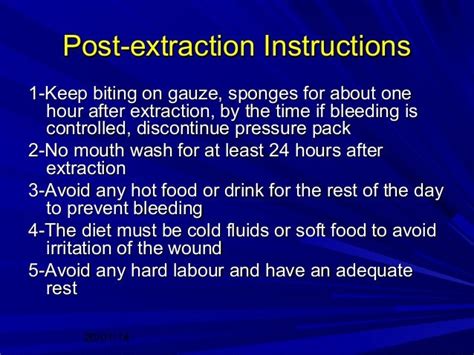Post-Extraction Gauze: Your Questions Answered
Having a tooth extracted can be a bit nerve-wracking, but understanding the post-extraction process, especially the role of gauze, can ease your worries. This comprehensive guide addresses common questions surrounding post-extraction gauze and helps you navigate this crucial part of your recovery.
What is the Purpose of Gauze After a Tooth Extraction?
The primary purpose of the gauze placed after a tooth extraction is to control bleeding and help form a blood clot at the extraction site. This clot is vital for healing and preventing complications like dry socket. The pressure applied by the gauze helps stem the bleeding and encourages the formation of this protective blood clot. Think of it as a natural bandage for your gums.
How Long Should I Keep the Gauze in Place?
Typically, you should keep the gauze in place for 30-45 minutes, biting down firmly. If bleeding persists after removing the first gauze, replace it with a fresh piece and continue applying pressure for another 30-45 minutes. Don't be alarmed by a small amount of oozing; some slight bleeding is normal. However, significant bleeding that soaks through multiple gauzes requires immediate contact with your dentist or oral surgeon.
What Should I Do If the Bleeding Doesn't Stop?
If bleeding continues heavily despite consistent pressure with fresh gauze, contact your dentist or oral surgeon immediately. Prolonged bleeding can indicate a problem, and professional intervention is crucial.
What If I Bite Down and the Gauze Tastes Metallic?
A metallic taste is usually due to the interaction of blood with the gauze. This is perfectly normal and nothing to worry about.
Can I Eat or Drink After the Extraction With Gauze in Place?
No. You should avoid eating, drinking, or smoking while the gauze is in place. This can dislodge the clot, leading to complications. Wait until the bleeding has significantly subsided and your dentist has given you the all-clear before resuming any food or drink.
What Happens If the Blood Clot Dissolves (Dry Socket)?
Dry socket is a painful complication that occurs when the blood clot at the extraction site is dislodged or dissolves prematurely. Symptoms include persistent pain, a bad taste in your mouth, and sometimes a visible empty socket. If you suspect you have a dry socket, contact your dentist immediately. They can provide appropriate treatment to manage the pain and promote healing.
What Kind of Gauze is Best After a Tooth Extraction?
Your dentist will typically provide you with sterile gauze pads specifically designed for post-extraction use. Using any other type of gauze is not recommended, as it may not be sterile and could introduce infection.
How Do I Properly Dispose of the Used Gauze?
Once the bleeding has stopped and the gauze is removed, dispose of it in a sanitary way – preferably in a sealed plastic bag and then in your household trash.
How Can I Prevent Dry Socket After Tooth Extraction?
Following your dentist's post-operative instructions carefully is key to preventing dry socket. This includes avoiding smoking, using a straw, and following the prescribed medication regimen. Maintaining good oral hygiene, but gently, also helps. Gentle rinsing with saltwater can help keep the area clean but avoid vigorous rinsing or swishing.
What Should I Do If I Experience Severe Pain After the Extraction?
While some discomfort is normal, severe pain warrants a call to your dentist or oral surgeon. They can assess the situation and determine the best course of action. Pain medication prescribed by your dentist should help manage discomfort. Never exceed the recommended dosage.
This information is for general knowledge and does not constitute medical advice. Always follow your dentist's specific post-operative instructions. If you have any concerns or questions, contact your dentist or oral surgeon immediately.

